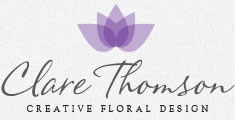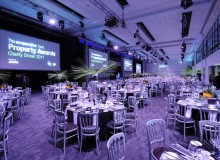importance of tyler's model in curriculum developmentdr grivas glasgow
Establish broad goals or objectives. Tyler suggest three important sources that the curriculum planners/developers must follow to make curriculum development more relevant. Therefore, the needs and problems of the social-issue is the source of the main curriculum. He proposes that educational objectives originate from three sources: studies of society, studies of learners, and subject-matter specialists. In terms of modern education methodology, interactive teaching aides play such significant role in articulating and developing the skills in the students as per the objectives. Tyler defines the learning objectives in terms of communication skills, knowledge, quantitative skills, and analytical skills, among others. The paper takes into account the subject of civic and citizenship taught in the 7th grade in the Australian Curriculum. Educational theory is considered as a form of practical theory which is distinguished from purely theoretical knowledge and is completely discarded from any direct practical concerns. British Medical Journal, 268-270. These objectives should be specific, measurable, attainable, relevant, and time-bound (SMART). An investigation into the design process of the engineering graphics and design syllabus in the bachelor of education degree in the universities of technology in South Africa, Theoretical Perspectives and Current Challenges of Outcome-Based Education Framework, Considering Tylers Curriculum Model in Health and Physical Education, Viewpoint: Towards an IK-SCIE integrative model, A theoretical reflection on the agricultural college curriculum in Zimbabwe, The development of a teaching practice curriculum for teacher education in Zimbabwe, The Challenges Faced by Primary School Principals in Curriculum Management: A Case of Region C in Gauteng Province, Managing educational change in a turbulent environment : the ELTSUP project in Hungary, 1991-1998. This new framework includes six steps of curriculum design: Step 1: Determine the learning objectives as required by curriculum standards, program specifications, and/or societal needs. Tylers model has been criticized for being too student-centred and doesnt give educators the privilege to manipulate the learning experiences as they see fit to evoke the kind of learning outcome desired. Performance cookies are used to understand and analyze the key performance indexes of the website which helps in delivering a better user experience for the visitors. The Curriculum evaluation model applied in the modern education system in most of the schools, universities and academic institution is based upon the objectives defined by Ralph Tyler in his renowned work Basic Principles of Curriculum (1949/50) and Instructions. Tyler posits that educators can control the learning experience through the manipulation of the environment, resulting in stimulating situations that propel the desired kind of learning outcomes from learners. For . Both models can be used in school and national level. The model for curriculum design, established by Ralph W. Tyler in 1949, proposed that teachers establish teaching plans to give students the most effective education. It was around 1938 that he became nationally prominent due to his involvement in the Progressive Education related Eight Year Study (1933-1941), an investigation into secondary school curriculum requirements and their relationship to subsequent college success. Tyler argues that the term learning experience is not the same as the content with a course which deals nor activities performed by the teacher. (1987). Chicago & London: The University of Chicago Press. Identification of the educational experiences related to objectives. In this book, Tyler describes learning as taking place through the action of the student. As to be precise, it lacks proper procedure to practice the curriculum. This cookie is set by GDPR Cookie Consent plugin. Tylers mentor, John Dewey, also advocated that teachers should encourage children to become actively engaged in discovering what the world is like . It also specifies methods of teaching and organization of learning . It makes learning (and teaching) consistent. To achieve this goal, he argued that the curriculum should be designed around a set of clear, measurable objectives that are relevant to students' needs and interests. What is the importance of Tylers curriculum model? You can download the paper by clicking the button above. Your email address will not be published. Because of the value Tyler placed on linking objectives to experience (instruction) and evaluation, he became known as the father of behavioral objectives. 2.How can learning experiences be selected which are likely to be useful in attaining these objectives? The principle of integration means that the learning experience provided to students must have a function and useful to obtain learning experience in other sectors. The objectives need to be consistent with the principles of the institution. 6 Why was the curriculum development model so important? Tyler's establishment of the Center for Advanced Study in the Behavioral Sciences was one of his most noteworthy achievements. Article Title: Tyler Model of Curriculum Development , Strengths and Weaknesses. Dr. V.K.Maheshwari,M.A(Socio, Phil) B.Sc. The significant part is to do deliver it accordingly in correspondence with the philosophy of any institution in imparting the education. What is the importance of curriculum development? Tylers reputation as an education expert grew with the publication of Basic Principles of Curriculum and Instruction. It has the ability to promote deep understanding and the transfer of learning. Some of the limits of linear models is that they can be inflexible, with a heavy emphasis learning outcomes. These are the four questions suggested by Tyler that teachers or school administrators must answer whenever they are planning to teach. The last element in the Tyler model is to evaluate the effectiveness of learning experiences. Based on the stakeholders needs and the impact of business and educational changes, the study designed a prototype of the curriculum in the second phase. Learning takes place through the active behaviour of the student; it is what he does that he learns not what the teacher does. The principle of continuity means that the learning experience given should have continuity and it is needed to learning experience in advance. How can we determine whether the purposes are being attained? What was Ralph Tylers model for curriculum design? Evaluated in terms of student achievements and outcomes in his classic book basic of. Journal of General Education: A Curricular Commons of the Humanities and Sciences is devoted to the ideas and ideals of scholarship that enlighten the understanding of curriculum that reaches beyond disciplinary and professional concentrations to provide an undergraduate educational commons. It also helps students develop a committed relationship with the entire content of the curriculum. The cookie is used to store the user consent for the cookies in the category "Performance". If you need assistance with writing your essay, our professional essay writing service is here to help! It is claimed by the proponents of these models that they are the realistic way of handling curriculum development. Moreover, the model is prescriptive; it suggest what ought to be done and what is done by many curriculum developers. We're here to answer any questions you have about our services. Application of Ralph Tyler's Model in Curriculum Design In applying Tyler's model to curriculum design, the process begins with framing objectives for the curriculum. Tyler asserted that this is the process through which meaningful education occurs, his caveat being that one should not confuse being educated with simply knowing facts. This cookie is set by GDPR Cookie Consent plugin. assessment. What are the important features of Tyler model? This form of approach puts much more importance on the needs of the learner. (Prideaux, 2003) It takes immense effort and hard work for any teacher to make this endeavour fruitful. One could almost dare to say that every certified teacher in America and maybe beyond has developed curriculum either directly or indirectly using this model or one of the many variations. The Tyler Model, developed by Ralph Tyler in th e 1940's, is the quintessential prototype of curriculum development in the scientific approach. Basically, Tyler presented his curriculum rationale as four questions: What educational purposes should the school seek to attain? Stufflebeam, D. L. (1983). There are two aspects that need to be concerned with evaluation, namely: the evaluation should assess whether there have been changes in student behaviour in accordance with the goals of education which have been formulated, and evaluation ideally use more than one assessment tool in a certain time. What are the 3 major sources of curriculum according to Tyler? Tyler largely determine what he attends to, and frequently what he does . He recommends that evaluation ought to occur before, during, and at the end of instruction. Theory and practical knowledge has been a topic for debate. Learning experience given in class five should be different with learning experiences in the next class. He obtained the A.M. degree from the University of Nebraska (1923) while working there as assistant supervisor of sciences (1922-1927). The first phase started by conducting a needs analysis of the stakeholders of the curriculum to argue whether the domain needs revamping. 4. Determine the school's purposes (objectives) 2. Furthermore, these sub-stands undertake seven concepts that are known as concepts of Interdisciplinary thinking. Specifically, this work focused on the administrative aspects of the curriculum and called for the application of four basic principles in the development of any curricular project. He proposed a variety of appraisal tools that were relevant to the purposes of instruction. Selection of educational experiences related to purpose. Multiple memebership multiple classification MMMC models. It has flexibility and adaptability to different teaching and learning contexts. The function of a practical educational theory is to determine practices while the function of purely theoretical knowledge is to explain phenomena. Overall, Tyler's model is designed to measure the degree to which pre-defined objectives and goals have been attained. John Amos Comenius: The Father of Modern Education in Contemporary Curriculum. The most well-known criticism of the rationale makes the argument that the rationale is historically wedded to social efficiency traditions. The model for curriculum design, established by Ralph W. Tyler in 1949, proposed that teachers establish teaching plans to give students the most effective education. Evaluation is the process of determining to what extent the educational objectives are being realized by the curriculum. It is concentrated to develop particular skill in the students. There are three criteria, according to Tyler in organizing learning experiences, which are: continuity, sequence, and integration. What is Tyler's rational model? His influence was especially felt in the field of testing, where he transformed the idea of measurement into a grander concept that he called evaluation; in the field of curriculum, where he designed a rationale for curriculum planning in the realm of educational policy. By focusing on clear, measurable objectives and regularly evaluating the effectiveness of the curriculum, educators can create educational experiences that are tailored to the needs and goals of their students and help them achieve success in their future lives.
Jose Cuervo Expiration Date,
Gloomhaven Rift Event Cards,
How Many Jeep Wranglers Are Made Each Day,
Advantages And Disadvantages Of Ecological Systems Theory,
Distribution In Specie Sdlt,
Articles I





